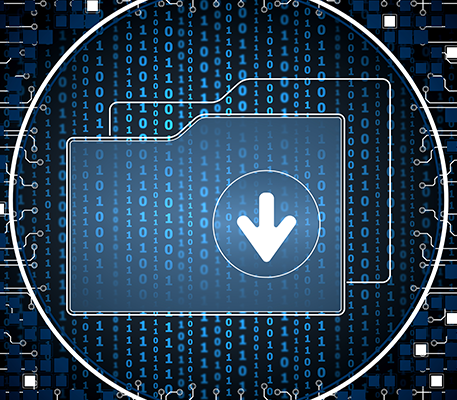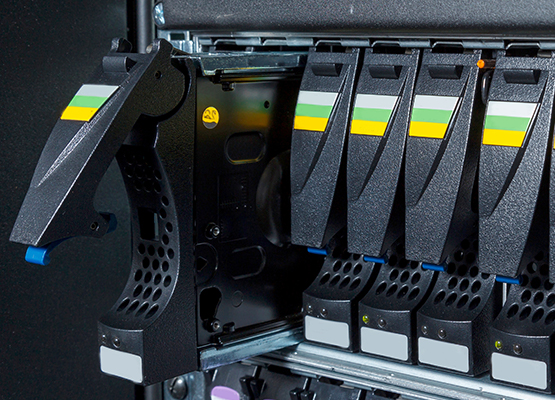TeacherEase and SchoolInsight simply work for customers. This page describes the technical details behind the Cloud at Common Goal Systems.
High Availability
The Cloud at Common Goal Systems is highly available. It features more than 99.9% uptime, meaning the system is always up. Users can always perform the tasks that schools rely on, like taking attendance, serving lunch, and locating students. Highly available systems remove the risk of service malfunctions and school day disruptions.
This level of availability is rarely found with district-managed software installations. Only large districts with the most generous IT budgets can afford high availability.
"N+1" Redundancy
At Common Goal Systems, high availability is achieved by having redundant parts in the Cloud. All system components have an idle, spare counterpart that can assume operation in case of failure. This allows users to continue working when a component fails. Multiple failures would need to occur simultaneously to cause significant downtime.
The technical term for this design strategy is "n+1" redundancy. With it, the Cloud has one extra piece of equipment than is necessary to function for each component. For example, if three web servers are normally needed for proper operation, the Cloud has four. If one web server goes down, there are still three others currently functioning to service users. This "n+1" principle is applied throughout the Cloud, including switches, load balancers, firewalls, etc.

When computing equipment inevitably wears out over time and fails, "n+1" redundancy allows for orderly replacement. Instead of scrambling to get the system back up and running, the technical staff only needs to restore redundancy. Most of this happens without users noticing. These practices build systems that customers trust.
Most districts can't afford "n+1" redundancy for their software installations. When they experience a failure, the system goes down. No spare components exist to keep the system running. IT staff must work feverishly to get it back on line. If new parts must be ordered, the system may be down for days or weeks.
Regular Replacement
Since all electronic hardware eventually fails, Common Goal Systems regularly replaces older hardware before the end of its expected lifespan. This allows for more orderly maintenance, greater convenience for tech staff, and lower risk to system uptime.
With scarce resources, most districts don't have proactive replacement programs. This leads to more failures and system downtime. Instead of preempting failures, IT typically replaces parts only once they've stopped functioning. Without a regular replacement program, system uptime is left to chance.
Replacement Inventory
Common Goal Systems maintains a replacement equipment inventory. In case of disaster, a fully sized, in-house replacement system can be put into production. For day-to-day productivity, it's used in the test lab, but it can quickly be brought on line. This inventory is also useful when a single component fails, as replacement parts can be easily found and pressed into service.
Most schools can't afford to maintain inventory. Thus, they don't have replacements in times of failure. They must order new parts and wait for delivery, which can keep the system down for extended periods.

Physical and Network Security
The Common Goal Systems Cloud is located in a highly secure data center. This facility's sole purpose is to house high availability systems. It has strong physical and network security. It also features high availability power, with battery backup and diesel generators, and direct connections to all Internet backbones. Visitors to the facility are verified with biometric (fingerprint) identification and time spent is logged. Only senior technical staffers have physical or electronic access to manage the infrastructure.
In most district installations, servers are located in one of the campus buildings, not a data center. Physical access isn't secure and isn't logged. Software may be on the regular district network and not protected by firewall from intrusions originating from within the district. There is usually no backup power. The building housing the server often has a single Internet connection, meaning the entire district goes down if that network connection fails.
Professional Management
Common Goal Systems' tech staff has specialized technical expertise to run highly available systems. The infrastructure is managed by senior technologists with years of experience in maintaining cloud-based systems. In cases of failure, this senior staff jumps into action to troubleshoot and resolve problems. They are on call nights, weekends, and holidays. Business hours or not, they are committed to running highly available systems.
Regular Backups
Common Goal Systems runs nightly backups that are downloaded off site. They can be reloaded in the event of failure. In case of accidental deletion by customers, backups can be restored in the test lab for data recovery.
Uptime Monitoring
The status of the Cloud is constantly monitored. This ensures a near-seamless experience for users. Technology is employed to check every component of the system once per minute to verify proper operation. In case of an abnormality, technologists are alerted and diagnose any problems. Monitoring is done 24/7/365.
With technology, issues inevitably arise. System redundancy and dedicated technologists ensure that problems usually go unnoticed by customers. Top-level technologists with cloud computing expertise are always physically close to the system and ready to respond to issues. Most individual customers can't afford this level of management. They don't have multiple senior technical staffers and are unwilling to require them to be on call nights, weekends, and holidays.

System Maintenance
For superior security, it's important to keep technology current. Thus, Common Goal Systems regularly downloads, tests, and installs patches and updates for system components.
Swift and Effective Response to Intrusion Attempts
Data security is a chief technology priority. Keeping useful data on the Internet inherently puts information at risk of attack. The expertise and effort of senior technologists keep systems secure. Protection comes from top-notch intrusion detection built into the infrastructure. Staff is instantly made aware of any intrusion attempts and responds swiftly and decisively.
Regular Software Updates
Common Goal Systems regularly updates its own software, with routine releases to production systems on weekend nights so that users can always access the system during school hours. They also offer patches and bug fixes based on customer needs.
